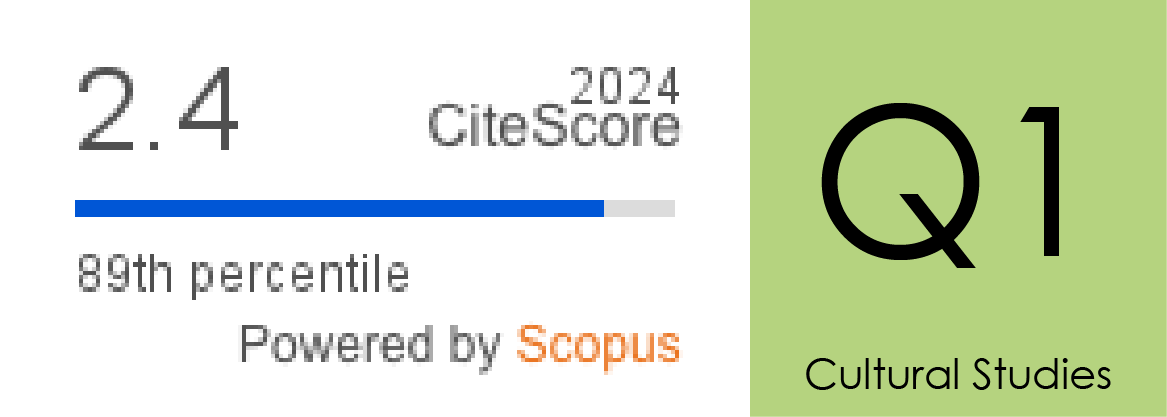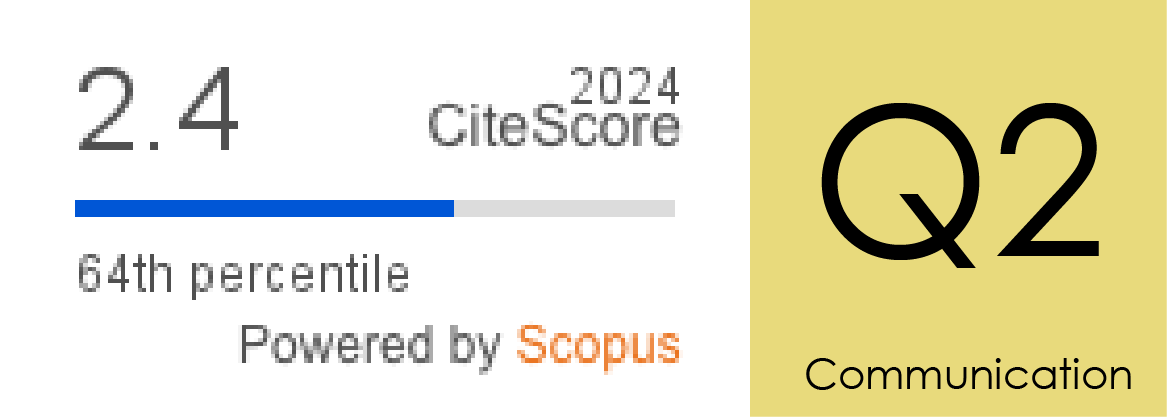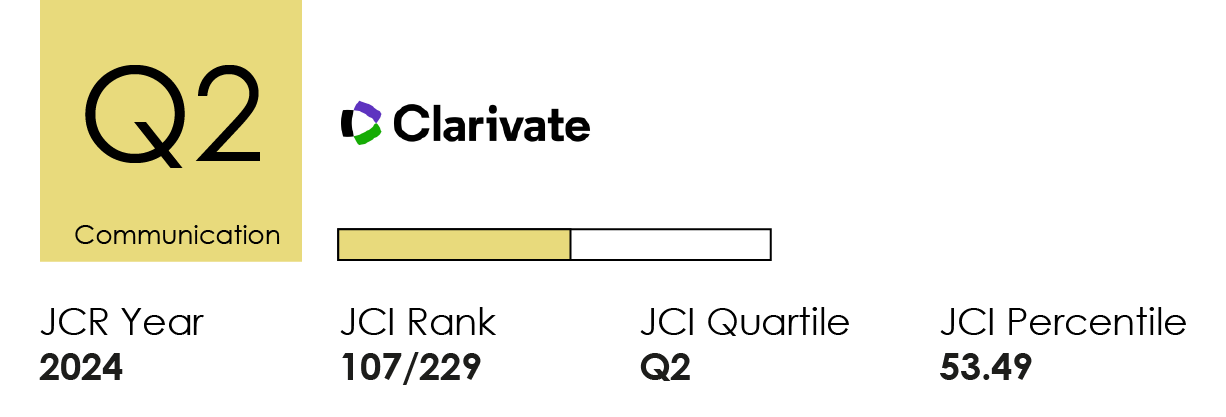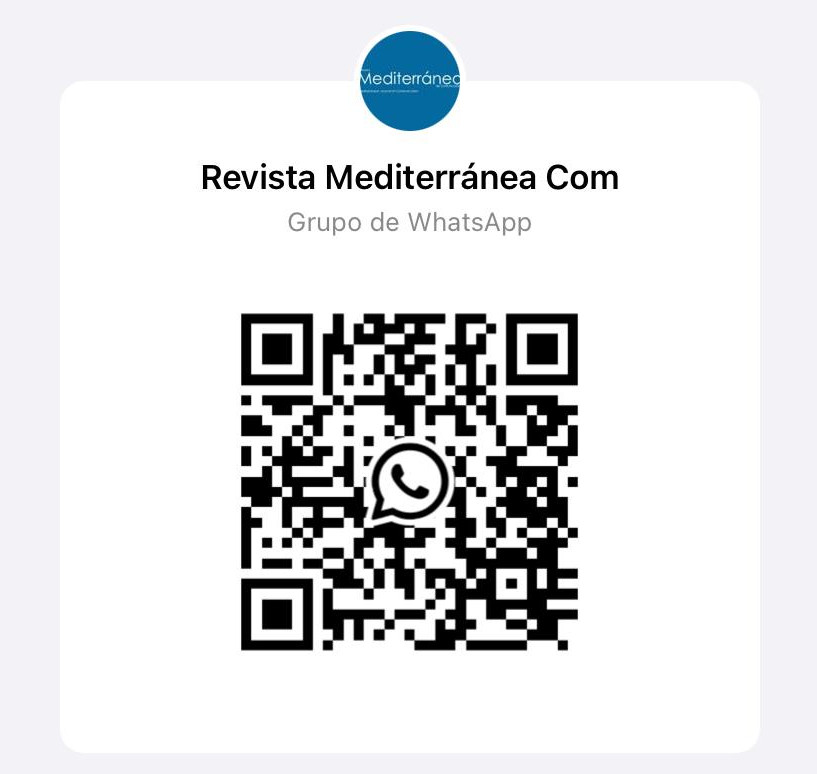Advergames y publicidad ingame en redes sociales
Una revisión sistemática
DOI:
https://doi.org/10.14198/MEDCOM.29949Palabras clave:
advegame, ingame, redes sociales, revisión sistemáticaResumen
El sector de los videojuegos se ha encumbrado como el preferente para el ocio, y su desarrollo al albur de las redes sociales no ha pasado desapercibido por anunciantes y marcas, que consideran esta unión una interesante fuente narrativa para llegar a sus clientes. Propósito. Destacar el estado del arte en la cuestión analizada. Metodología. Se desarrolla una revisión sistemática en Web Of Science, que contempló el análisis de 42 artículos Resultados y conclusiones. Los resultados contemplan elementos formales, de diseño y de contenido. Respecto de los elementos formales, destacamos entre otros que son mayoritariamente posteriores a 2015, están firmados por menos de 4 autores y publicados en idioma inglés, Por término medio, tienen 19 páginas, 10 palabras clave y un resumen de 180 palabras. Respecto de los elementos de diseño, se destaca que la mayoría son de corte empírico y usan métodos de investigación cuantitativos con enfoques preeminentemente descriptivos y causales. Por otra parte, respecto del contenido la literatura analizada se decanta esencialmente por el análisis de varios modos publicitarios a la vez (advergames, publicidad ingame y ad around game). No obstante, cuando se estudia sólo un modo, lo más frecuente es el estudio de publicidad ingame (IGA), aunque la escasez de estudios sobre advergames se limita al ámbito de las redes sociales, siendo abundante en otros aspectos. Aportación original. El valor de este artículo radica en destacar sobre qué y cómo se investiga dentro del campo de la publicidad en videojuegos en redes sociales.
Citas
Adibi, Farnoosh, Majidi, Babak & Eshghi, Mohammad (2018). Personalized Advertisement in the Video Games Using Deep Social Network Sentiment Analysis. In 2nd National and 1st International Digital Games Research Conference: Trends, Technologies, and Applications (DGRC) (pp. 104-108). IEEE.
Allington, Daniel (2016). Linguistic Capital and Development Capital in a Network of Cultural Producers: Mutually Valuing Peer Groups in the 'Interactive Fiction' Retrogaming Scene. Cultural Sociology, 10(2), 267-286. https://doi.org/10.1177/1749975515598333
Alonso, Diego, Monteserin, Ariel y Berdun, Luis (2023). An interaction-aware approach for social influence maximization. IEEE Latin América Transactions, 21(11). https://doi.org/10.1109/TLA.2023.10268278
Anubha & Jain, Ajai (2024). In-game advertising and brand purchase intentions: an SOR perspective. Global Knowledge Memory and Communication, 73. http://doi.org/10.1108/GKMC-02-2022-0050
Barbosa, Belem, Saura, Jose Ramon, Zekan, Senka Borovac & Ribeiro-Soriano, Domingo (2024). Defining content marketing and its influence on online user behavior: a data-driven prescriptive analytics method. Annals of Operation Research, 337. https://doi.org/10.1007/s10479-023-05261-
Baumeister, Roy & Leary, Mark (1997). Writing narrative literature reviews. Review of General Psychology, 1(3), 311–320.
Berciano-Garrido, Darío (2021). The age island. Seniors and the media. Prisma Social, 34.
Bonete, Paula (2021). Social Gaming Marketing para incrementar tus ventas. Revista Increnta. https://bit.ly/3Gn9eEm
Boote, David & Beile, Penny (2005). Scholars before researchers: on the centrality of the dissertation literature review in research preparation. Educational Researcher, 34(6), 3–15. https://doi.org/10.3102/0013189X034006003
Booth, Andrew, Papaionnaou, Diana & Sutton, Anthea (2012). Systematic Approaches to a Successful Literature Review. Sage.
Burgess, Jacqueline & Jones, Christian (2020). Exploring the forced closure of a brand community that is also a participatory culture. European Journal of Marketing, 54(5), 957-978. https://doi.org/10.1108/EJM-01-2019-0075
Chang, Jiyoon & Lee, Daeho (2022). Changes in user experience and satisfaction as media technology evolves: The reciprocal relationship between video games and video game-related media. Technological Forecasting and Social Change, 174. https://doi.org/10.1016/j.techfore.2021.121219
Chen, Huan, Haley, Eric & Deterding, Audrey (2016). Product Placement in Social Games: Qualitative Research Insights. In Patrick De Pelsmacker (Ed), Advertising in new formats and media: current research and implications for marketers (pp. 335-360). Emerald.
Clayton, Andrew (2018). Essays on Social Demand Estimation: Evidence from CAPS and Steam. [Tesis, University of Washington].
Control Publicidad (2024). eSports: De entretenimiento nicho a industria millonaria. https://goo.su/Hhyd5
Cortes Gómez, Sara, Garcia Pernia, Maria Ruth y Lacasa, Pilar (2012). Video Games and Social Networking. The process of Identity in The Sims 3. Revista de Educación a Distancia, 33.
Counsell, Carl (1997). Formulating questions and locating primary studies for inclusion in systematic reviews. Annals of Internal Medicine, 127(5), 380–387. http://dx.doi.org/10.7326/0003-4819-127-5-199709010-00008
Combs, Julie, Bustamante, Rebecca & Onwuegbuzie, Anthony (2010). An interactive model for facilitating development of literature reviews. International Journal of Multiple Research Approaches, 4(2), 159–182. http://doi.org/10.5172/mra.2010.4.2.159
De la Hera, Teresa. (2019). Digital Gaming and the Advertising Landscape. Amsterdam University Press. https://doi.org/10.2307/j.ctvnp0j4g
De-La-Vara-López, Javier y De-Marchis, Georgio (2024). Redefining in-game advertising: A systematic literature review and an updated definition. Revista de Comunicación, 23(2). https://doi.org/10.26441/rc23.2-2024-3497
Del Moral Pérez, Maria Esther y Férnandez, Laura Carlota. (2014). “Branding content”: con-jugando entretenimiento y publicidad en escenarios lúdicos y emocionales. En Ron Álvarez, Rodrigo y Núñez, Patricia (Eds.), Bajo la influencia del branded content. Efectos de los contenidos de marca en niños y jóvenes (pp. 103-116). ESIC Editorial.
Del Moral Pérez, María Esther, Villalustre Martínez, Lourdes y Neira Piñeiro, María del Rosario (2016). Estrategias publicitarias para jóvenes: advergaming, redes sociales y realidad aumentada. Revista Mediterránea de Comunicación, 7(1), 47-62. https://doi.org/10.14198/MEDCOM2016.7.1.3
Del Moral Pérez, M. Esther, Martinez Villalustre, Lourdes y Neira-Pineiro, Rosario (2016). Minors trapped in the magical world of augmented reality, advergaming and social networks. Prisma Social, 1(Especial), 1-28.
Facebook. (2020). ¿Qué impacto tuvieron los anuncios en los juegos? Se lo preguntamos a los editores de juegos y a los jugadores. https://goo.su/wlMbBO
Facebook Gaming. (2021). Estadísticas para marketing de videojuegos en 2021. https://goo.su/djnhN8W
Fleet, Robert & Nurmikko-Fuller, Terhi (2019). The Potential for Serious Spaceships to Make a Serious Difference. In Proceedings of the 11TH ACM Conference on Web Science (WEBSCI'19) (pp. 97-104). https://doi.org/10.1145/3292522.3326017
Frid, Igal (2020) KPIs esenciales para la medición de aplicaciones de juegos. https://goo.su/tuKzeq
Ge, Xu, Zhang, Xiuzhen & Zhao, Dengji (2023). Maximal Information Propagation with Limited Resources. Distributed Artificial Intelligence. In International Conference on Distributed Artificial Intelligence (pp. 45-59). Springer Nature Switzerland. https://doi.org/10.1007/978-3-031-25549-6_4
Giombi, Kristen, Viator, Catherine, Hoover, Juliana, Tzeng, Janice, Sullivan, Helen , O'Donoghue, Amie, Southwell, Brian G. & Kahwati, Leila (2022). The impact of interactive advertising on consumer engagement, recall, and understanding: A scoping systematic review for informing regulatory science. Plos One, 17(2). https://doi.org/10.1371/journal.pone.0263339
González Manchego, Andrés Felipe (2019). La memoria histórica de los falsos positivos en Soacha (FPS): una mirada desde la construcción de narrativas transmedia de los estudiantes de la institución educativa Santa Ana (IEAS). [Tesis, Universidad Distrital Francisco José de Caldas].
Grant, María & Booth, Andrew (2009). A typology of reviews: an analysis of 14 review types and associated methodologies. Health Information Libraries Journal, 26(2), 91–108. https://doi.org/10.1111/j.1471-1842.2009.00848.x
IAB Spain. (2024). Tendencias y datos de RRSS en España. https://goo.su/y4g04v
ICMD (2024). El Auge de los Videojuegos como Canal de Publicidad. https://goo.su/d5ddKLx
Inga Ávila, Miguel Fernando, Churampi Cangalaya, Roberto Líder y Vicente Ramos, Wagner Enoc (2022). Academic procrastination in undergraduate problem solving. Conrado, 18(89), 404-411.
James, Richard, & Bradley, Alex (2021). The Use of Social Media in Research on Gambling: a Systematic Review. Current Addiction Reports, 8, 235 - 245. https://doi.org/10.1007/s40429-021-00364-w
Jankowski, Michat (2013). Grywalizacja – wykorzystanie elementów gier do modyikowania zachowań ludzi. Nauki Spoleczne, 2(08), 139-155.
Jiao, Yifan, Tang, Christopher S. & Wang, Jingqi (2022). An empirical study of play duration and in-app purchase behavior in mobile games. Product and Operations Management, 31(9), 3435-3456. https://doi.org/10.1111/poms.13772
Kureshi, Sonal & Sood, Vandana (2009) Indian gamers' recall, recognition and perceptions of in-game placements. Journal of Indian Business Research, 1(4). https://doi.org/10.1108/17554190911013283
León, Víctor Omar Vite (2022). Percepción de la Competencia Mediática de Estudiantes y Docentes de las Carreras de Ciencias Sociales de Universidades Privadas de Lima Metropolitana. [Tesis, Pontificia Universidad Católica del Perú].
Lupa, Iwona (2016). Social Gaming as a New Marketing and Management Tool. In Manera, Camilo, Knowledge economy society strategies, concepts and instruments of managment. Cracow University of Economics: Cracovia
Mallinckrodt, Victoria, & Mizerski, Dick (2007). The effects of playing an advergame on young children's perceptions, preferences, and requests. Journal of Advertising, 36(2), 87-100. https://doi.org/10.2753/JOA0091-3367360206
MacLucan (2021). ¿Cómo incluir el Social Gaming en tu estrategia de marketing?. https://bit.ly/4cHsnNk
Martin Ramallal, Pablo y Micaletto Belda, Juan Pablo (2021). Tiktok, gen z symbiotic network for augmented reality and immersive advergaming. Revista de ComunicacIón, 20(2). https://doi.org/10.26441/RC20.2-2021-A12
Micallef, David, Brennan, Linda, Parker, Lukas, Schivinski, Bruno & Jackson, Michaela (2021). Where Do Online Games Fit into the Health Behaviour Ecology of Emerging Adults: A Scoping Review. Nutriens, 13(8). https://doi.org/10.3390/nu13082895
Negahban, Ashkan (2016). Application of Simulation and Optimization Approaches in Supply-Constrained Innovation Diffusion. [Tesis, Auburn University].
Nelson, Michelle & Waiguny, Martin (2012). Psychological Processing of In-Game Advertising and Advergaming: Branded Entertainment or Entertaining Persuasion. In Louis Shrum, (Ed), The Psychology of Entertainment Media: Blurring the Lines Between Entertainment and Persuasion. Routledge
Nicklas, Jeff (2024). Experientially simulated others: finding social support for mental health in digital games. Information Communication & Society, 28(7). https://doi.org/10.1080/1369118X.2024.2396632
Onishi, Hiroshi (2011). Traditional Marketing, Online Communication and Market Outcomes Essay 1: Marketing Activity, Blogging and Sales. Essay 2: Consumers' Social Learning about Videogame Consoles through Multi-Website Browsing. Essay 3: Co-evolution of Network Growth and Group Formation. [Tesis, University of Michigan].
Onwuegbuzie, Anthony, Leech, Nancy & Collins, Kathleen (2014). Innovative qualitative data collection techniques for conducting literature reviews/research Syntheses. In Williams, Malcolm & Vogt, Paul (eds.), The SAGE Handbook of Innovation in Social Research Methods (pp. 182–204). Sage. https://doi.org/10.4135/9781446268261.n13
Orduna-Malea, Enrique, Martín-Martín, Alberto y Delgado López-Cózar, Emilio (2016). Metrics in academic profiles: a new addictive game for researchers?. Revista Española de Salud Pública, 90.
Pardo Adames, Carlos Antonio, Medina Arboleda, Iván Felipe y Castiblanco Moreno, Suelen Emilia (2023). The contribution of cognitive processing to scores in mathematics in the Third Regional Comparative and Explanatory Study. Interdiciplinaria, 40(1), 280-300. https://doi.org/10.16888/interd.2023.40.1.17
Pérez-Escolar, Marta y Canet, Fernando. (2022). Research on vulnerable people and digital inclusion: toward a consolidated taxonomical framework. Universal Access in the Information Society, 22, 1059-1072. https://doi.org/10.1007/s10209-022-00867-x
Petticrew, Mark (2001). Systematic reviews from astronomy to zoology: myths and misconceptions. BMJ, 322(7278), 98–101. https://doi.org/10.1136/bmj.322.7278.98
Petticrew, Mark & Roberts, Helen (2006). Systematic Reviews in the Social Sciences: A Practical Guide. Blackwell.
Planells de la Maza, Antonio Jose (2018). La deposession. BID-Textos Universitaris de Biblioteconomia i Documentacio, 41. https://doi.org/10.1344/BiD2018.41.15
Prodigioso Volcan (2021) Del ego a la tribu. Tendencias en redes sociales para 2021. https://bit.ly/3S83Ozz
Rentschler, Kyle (2015). Valueable circuitries: An examination of human values embedded in commercial video game design. [Tesis, New York University].
Reyes-de-Cózar, Salvador, Pérez-Escolar, Marta y Navazo Ostúa, Pablo (2022). Digital Competencies for New Journalistic Work in Media Outlets: A Systematic Review. Media and Communication, 10(1), 27-42. https://doi.org/10.17645/mac.v10i1.4439
Rifon, Nora, Tayllor Quilliam, Elisabeth, Paek, Hey-Jin, Weatherspoon, Lorraine J., Kim, Soon Kyong, & Smreker, Karen (2014). Age-dependent effects of food advergame brand integration and interactivity. International Journal of Advertising, 33(3), 475-508. https://doi.org/10.2501/IJA-33-3-475-508
Rodríguez Espinola, Amanda (2021). Video Games as Tools for Non-State Cultural Diplomacy: A Case Study of the Video Game Never Alone. [Tesis, University of Colorado at Boulder].
Siddaway, Andy, Wood, Alex & Hedges, Larry (2019). How to do a systematic review: a best practice guide for conducting and reporting narrative reviews, meta-analyses, and meta-syntheses. Annual Review of
Psychology, 70(1), 747–770. https://doi.org/10.1146/annurev-psych-010418-102803
Singh Roy, Anusua (2019). A data-driven statistical approach to customer behaviour analysis and modelling in online freemium games. [Tesis, Edinburgh Napier University].
Smith, Martin, Sun, Sally & Mackie, Bobbie (2014). In-Game Advertising influencing factors: a Systematic Literature Review and meta-analysis. The Computer Games Journal, 3(2)102-131. https://goo.su/mOjc9g
Soebke, Heinrich, Broeker, Thomas & Kornadt, Oliver (2013). Using the Master Copy - Adding Educational Content to Commercial Video Games. In Proceedings of the 7TH European Conference on Games Based Learning (pp. 521 – 530).
Sramova, Blandina (2015). Marketing And Media Communications Targeted To Children As Consumers. Procedia-Social and Behavioral Sciences, 191, 1522-1527. https://doi.org/10.1016/j.sbspro.2015.04.568
Steffen, Celina, Mau, Gunna, & Schramm-Klein, Hanna (2013). Who Is the Loser When I Lose the Game? Does Losing an Advergame Have a Negative Impact on the Perception of the Brand?. Journal of Advertising, 42(2-3), 183-195. http://doi.org/10.1080/00913367.2013.774598
Thaichon, Paramaporn & Thu Nguyen Quach (2016). Online marketing communications and childhood's intention to consume unhealthy food. Australasian Marketing Journal, 24(1), 79-86. https://doi.org/10.1016/j.ausmj.2016.01.007
Terlutter, Ralph & Capella, Michael (2013). The Gamification of Advertising: Analysis and Research Directions of In-Game Advertising, Advergames, and Advertising in Social Network Games. Journal of Advertising, 42, 112 - 95. https://doi.org/10.1080/00913367.2013.774610
Urdiales, Ernesto (20/10/2021). Twitch rompe récords de audiencia nuevamente en 2021. E-sports maniacos. https://bit.ly/4jMUmha
Vanwesenbeeck, Ini, Walrave, Michel & Ponnet, Koen (2016). Young Adolescents and Advertising on Social Network Games: A Structural Equation Model of Perceived Parental Media Mediation, Advertising Literacy, and Behavioral Intention. Journal of Advertising, 45(2), 85-97. https://doi.org/10.1080/00913367.2015.1123125
Vanwesenbeeck, Ini, Ponnet, Koen & Walrave, Michel (2017). Young adolescents' advertising literacy and purchase intention in social network games: Influence of perspective taking and need for cognition. Journal Of Consumer Behaviour, 16(1) 23-33. https://doi.org/10.1002/cb.1596
Waller, Talaya C. (2015). Marketing Strategies of Mobile Game Application Entrepreneurs. [Tesis, Walden University].
Wang, Shasha & Mizerski, Dick (2019). Comparing measures of persuasion knowledge adapted for young children. Psychology & Marketing, 36(12), 1196-1214. https://doi.org/10.1002/mar.21266
Williams, Joshua (2019). The use of online social networking sites to nurture and cultivate bonding social capital: a systematic review of the literature from 1997 to 2018. New Media & Society, 21(11–12). https://doi.org/10.1177/1461444819858749
Wrona, Kazaryna (2013). Grywalizacja i gry oraz ich potencjał do wykorzystania w strategiach marketingowych. Marketing i rynek, 10(20).
Yamanoi, Junichi (2011). Competition Networks: The Influence of Relational and Structural Embeddedness on Competitive Activity [Tesis, University of Connecticut].
Yanni Tang, Jiamou Liu &Wu Chen (2023). Spread of Opinion in a Social Network!. Information Sciences, 551 1-22. https://doi.org/10.1016/j.ins.2020.11.043
Zarouali, Brahim, Poels, Karolien, Ponnet, Koen & Walrave, Michael (2021). The influence of a descriptive norm label on adolescents' persuasion knowledge and privacy-protective behavior on social networking sites. Communication Monographs, 88(1) 5-25. https://doi.org/10.1080/03637751.2020.1809686
Zhang, Yun (2011). Social media's role, utility, and future in video game public relations [Tesis, University of Southern California].
Descargas
Publicado
Cómo citar
Número
Sección
Licencia
Derechos de autor 2018 Alejandro Tapia-Frade, Matias López-Iglesias, Mónica Matellanes-Lazo

Esta obra está bajo una licencia internacional Creative Commons Atribución 4.0.
Los autores y autoras que publican en esta revista están de acuerdo con los siguientes términos:
1 Derechos de autor. Los autores y autoras conservan sus derechos de autor, aunque ceden a la revista de forma no exclusiva los derechos de explotación (reproducción, distribución, comunicación pública y transformación) y garantizan a esta el derecho de primera publicación de su trabajo, el cual estará simultáneamente sujeto a la licencia indicada en punto 2. Los autores pueden establecer otros acuerdos adicionales para la distribución no exclusiva de la versión de la obra publicada en la revista, siempre que exista un reconocimiento de su publicación inicial en esta revista.
© Los autores.
2 Licencia. Los trabajos se publican en la revista sujetos a la licencia de Reconocimiento 4.0 Internacional de Creative Commons (CC BY 4.0); los términos se pueden consultar en https://creativecommons.org/licenses/by/4.0/
Esta licencia permite a terceros compartir (copiar y redistribuir el material en cualquier medio o formato) y adaptar (remezclar, transformar y crear a partir del material para cualquier finalidad, incluso comercial), siempre que se reconozca la autoría y la primera publicación en esta revista (Revista Mediterránea de Comunicación (RMC) / Mediterranean Journal of Communication (MJC), Universidad de Alicante, DOI de la obra), se proporcione un enlace a la licencia y se indique si se han realizado cambios en la obra.
3 Política de autoarchivo. Se recomienda a los autores que difundan sus trabajos a través de Internet para favorecer una circulación y difusión más rápidas y, con ello, un posible aumento en la citación y alcance entre la comunidad científica y académica, en las siguientes condiciones:
No se permite a los autores depositar en un repositorio institucional o temático, página web propia, etc., las versiones preprint (versión antes de ser evaluada) o postprint (versión evaluada y aceptada para su publicación) de sus trabajos antes de su publicación, pero sí el artículo final publicado (versión del editor).













